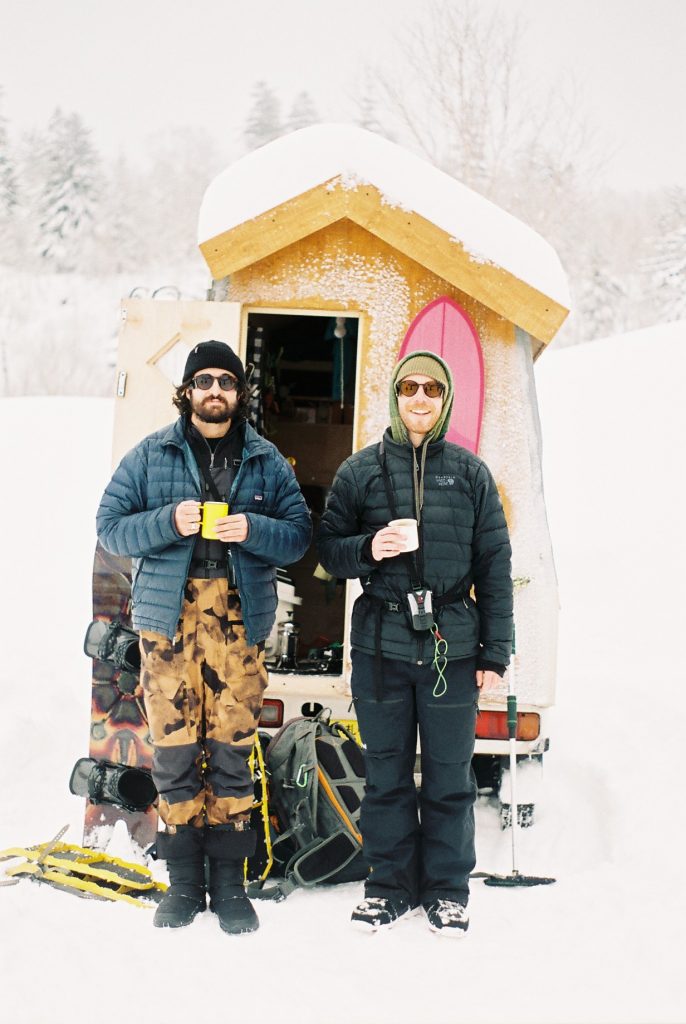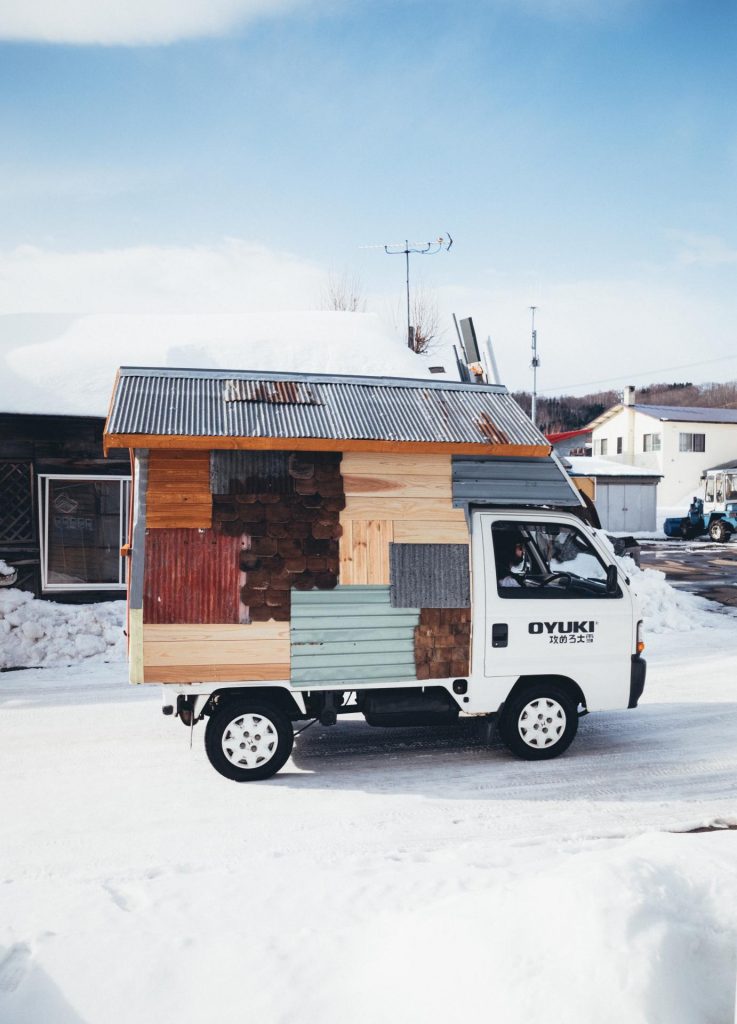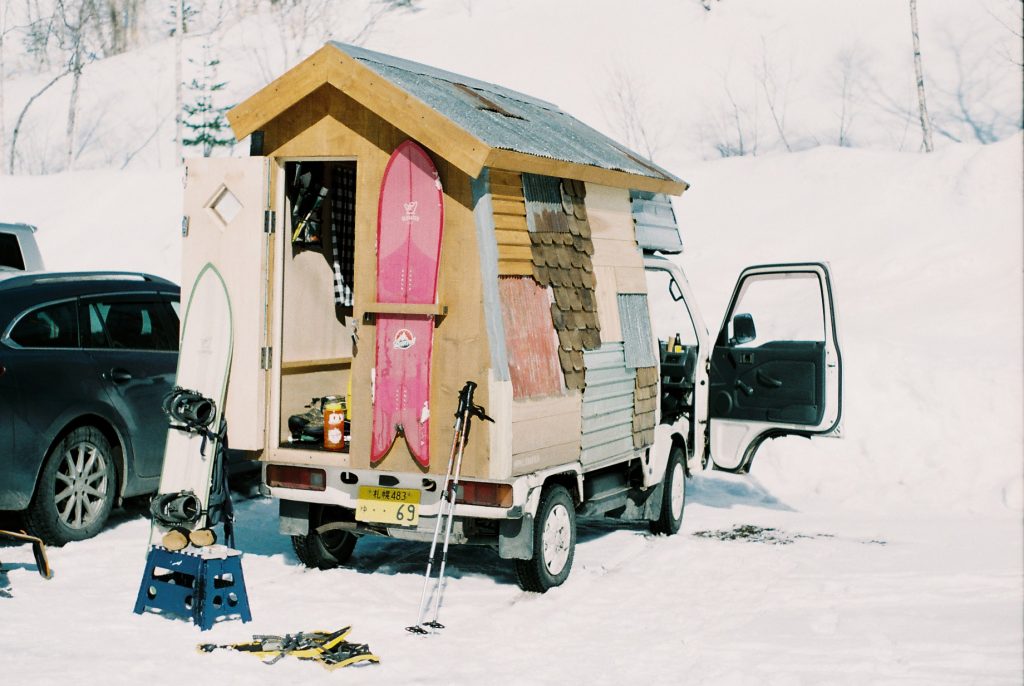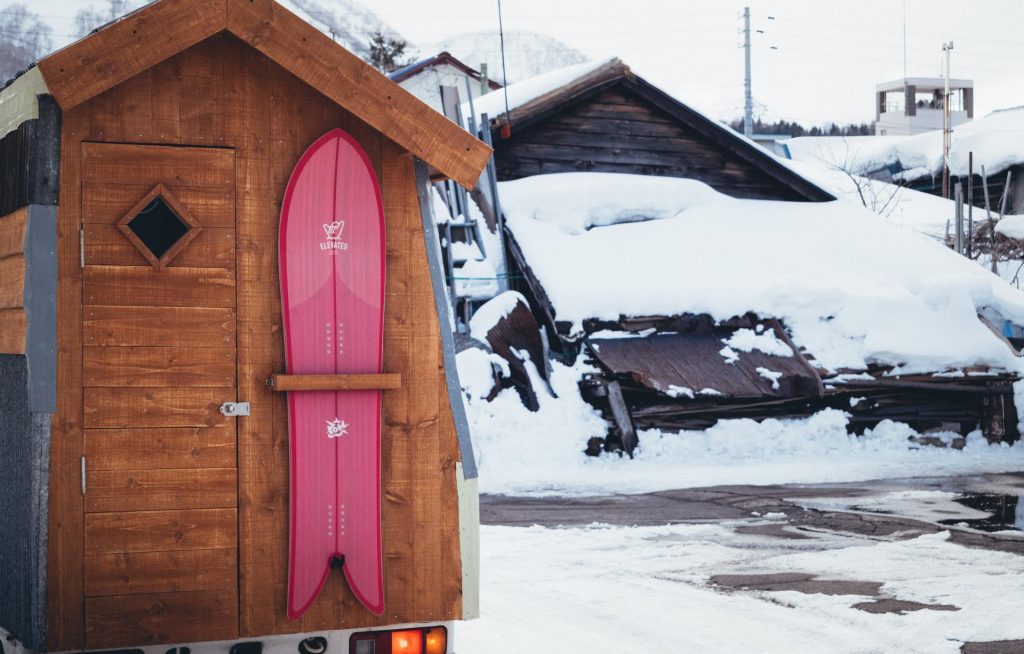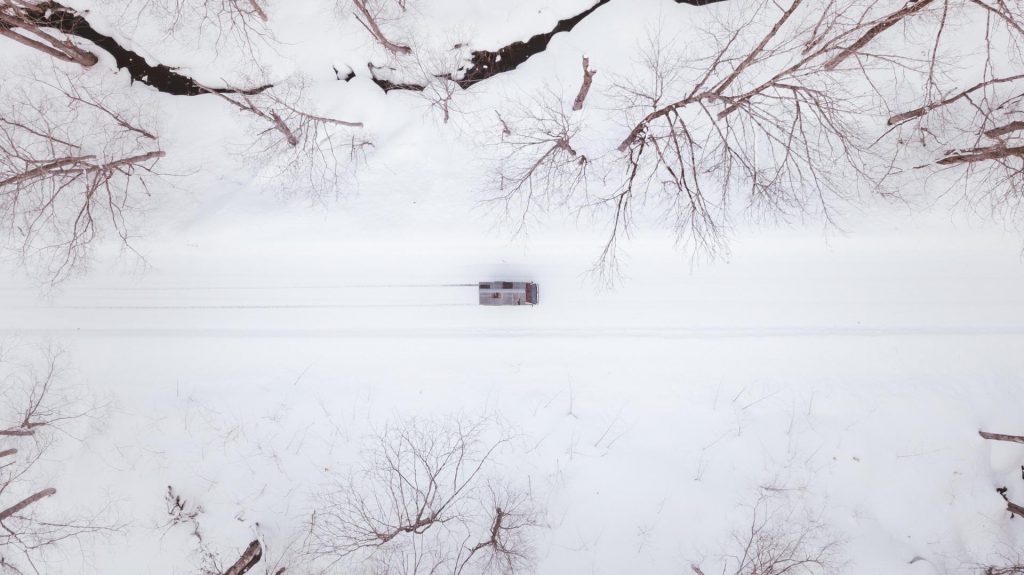If you were in Niseko, Hokkaido this winter, you may have seen a quirky cabin on wheels touring around the neighborhood. This microabode built on top of a Japanese kei truck belongs to handyman Henry Johnson and filmmaker Charlie Wood, two snowboarders united through their love for Hokkaido’s powder.
This past winter they collected odd bits and pieces from friends to build “Sabi-chan,” their lovable cabin-truck, and set off to explore Hokkaido’s backcountry in search of deep powder and unridden lines. Their adventure is documented in their short film, Wabi Sabi, which was released online in March 2020.
We chatted with Henry about the film, snowboarding and life in Hokkaido.
Rie Miyoshi: The first time we met was in 2018 up in Hokkaido; you were working at the Niseko Autumn Food Festival. You seem to be involved in a lot of projects around Niseko.
Henry Johnson: I’ve always had a keen eye for DIY and creating things with my hands. I grew up on a small farm in New Zealand where my dad taught me a lot. We built tree houses and skateboard ramps, and I was always keen to help out or get involved with tools. I feel I learn best by just throwing myself in and giving it a go. I learned to silversmith jewelry in India, assisted a group of volunteers to build a skatepark in Ethiopia and built custom motorcycles in Melbourne. I’ve always found great pleasure in creating, working on DIY projects and learning along the way.
RM: What brought you to Hokkaido?
HJ: The snow! It was actually a last-minute decision to come here. I was working at a bar in Melbourne at the time. One day after work, my workmate was discussing how he had just gotten a job in Niseko, so I decided to join him. I’ve now been here for three-and-a-half years and am loving it. The lifestyle is amazing across all seasons. Although I will admit, working in a seasonal town the winter can be quite hectic and stressful, but it balances nicely with a laid-back green season exploring Hokkaido’s interior.
RM: Hokkaido is the perfect place for outdoor enthusiasts. When did you start riding?
HJ: I was fortunate enough to grow up with a small ski field in my hometown. My parents were and still are keen skiers. I first began on a pair of skis at the age of four and took a fall and hit my knee…that day I decided to make the switch to snowboarding.
In high school I went to an all-boys school which was very rugby orientated. We would often be forced to watch the school’s team play, but my friends and I would go to school with our snowboard gear in the car and make a quick exit for the ski field before the game started.
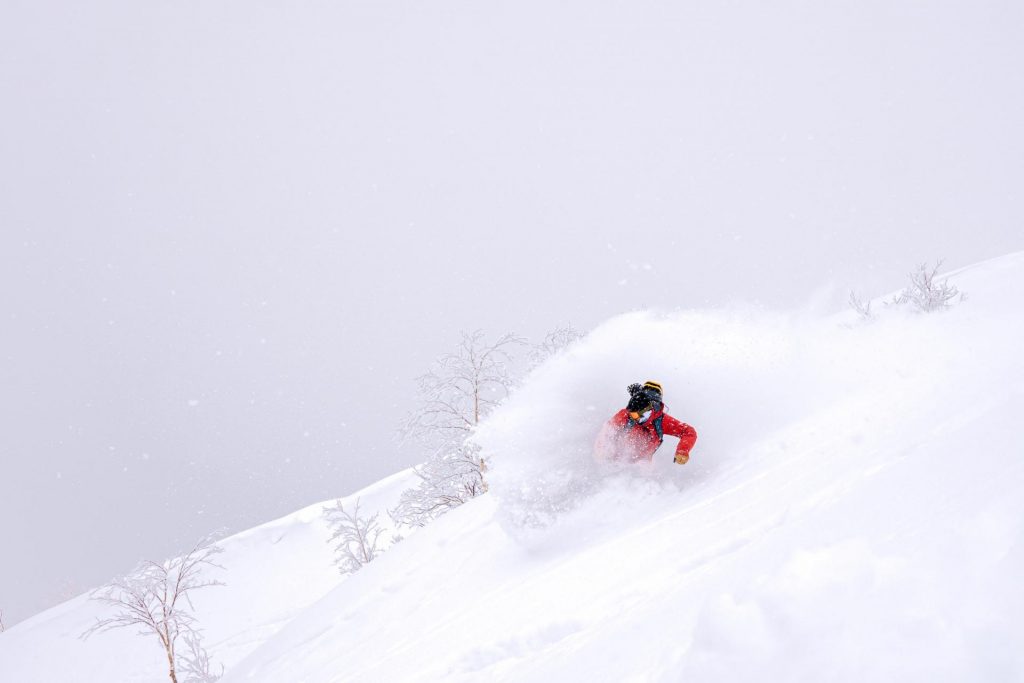
Photo by Elliot Waring
RM: Everyday must be pretty unique for you as you aren’t restricted to a 9-5 job. What’s a typical day like?
HJ: Currently as the snow season has pretty much wrapped up—and alongside the world pandemic—it’s pretty chill. In the past, I’ve found myself getting stuck in jobs I didn’t enjoy. So I’ve decided to take a new approach and put personal projects first. Now that spring is here, I’ve started preparing a vegetable garden in the backyard alongside some more DIY projects including building a pizza oven.
RM: Let’s shift gears and talk about Sabi-chan. What inspired you to create this tiny camper?
HJ: The Japanese kei truck. It’s a beautiful, quirky, little motoring icon. I’ve always been interested in camping cars but never been able to afford one. From the moment I saw these little trucks I knew I could build a little cabin on the back. I was also interested in film and sharing creative projects, hoping they will inspire others to do a project of their own.
While Charlie and I were living together, we discussed ideas and the idea to make Wabi Sabi came about. I remember Charlie saying, “I often discuss ideas with people over a beer or something, and nothing ever comes from it. It just stays as an idea.” So I knew we had to commit, and I knew the outcome would be great. Charlie is a very talented filmmaker and creative.
RM: How did you meet Charlie?
HJ: It’s funny, we’ve actually discussed this before but we can’t quite remember the full story. We think it was through mutual friends. Two winters ago Charlie was working on a film project for a friend Joseph from Shibumi Snowsurf and we spent some days together riding and filming with a cool crew. Charlie then returned to Niseko this past season and ended up staying at my place for a month in the autumn. It was a great time!
RM: What’s the story behind the name, “Wabi Sabi?”
HJ: In traditional Japanese aesthetics, wabi-sabi is described as beauty that is imperfect, impermanent and incomplete. Characteristics of the wabi-sabi aesthetic include asymmetry, roughness, simplicity, modesty and intimacy. Although there are a lot of different avenues of the wabi-sabi worldview, we felt our video, story and the camper build reflect this view. Sabi also means rust in Japanese to reflect our rusting roof.
RM: What was the most challenging part about the project?
HJ: We began building before looking into the legalities of building on top of a truck in Japan. It was only after we had almost completed the build that we then decided to look into the legalities—only to discover the original design was definitely not roadworthy. We had to make a tricky decision to cut around 40 centimeters off the left side of the cabin, which was quite a headache, but now I actually love how it looks.
RM: And the best part?
HJ: Seeing people’s smiles as we drove past. We traveled through rural Japanese towns and the reactions from the majority of people were great! People would come to chat, have a look and just generally be really positive about it. We couldn’t help but laugh seeing people’s mouths wide open or little kids pointing from the back seat while we were stopped at traffic lights.
Also, the local support from the community was huge. A lot of friends and now new friends donated building supplies and timber. We used as much recycled materials as possible—all of which was given to us. This enabled us to make the patchwork style cladding on Sabi-chan.
Rhythm Japan was a major partner in this project and their support allowed us to take this project to another level so we could obtain a lot of additional videography equipment. They are the real deal for all things snowsports in Niseko and beyond, and we’re so stoked to have worked on this project together with them. We’d also like to extend a huge thanks to Grover from Burton Niseko, Jimmy from Oyuki, Meg and Norris from The Pow Bar Cafe, Aaron and Alex from Elevated Surfcraft and Joseph from Shibumi Snowsurf.
RM: What’s next for Sabi-chan?
HJ: Sabi-chan is now resting in my shed, but I’ve been taking her out often for drives and will certainly be doing some exploring over the summer!
RM: And for you?
HJ: I love living in Hokkaido; it feels like a great place to be based to create. I would love to work on more projects like this and feel this is just the beginning of many more creative pursuits in the outdoors. With the current pandemic going on and constantly fueled by social media, I want to stay calm, stay humble and stay smiling.
Photos by Charlie Wood and Henry Johnson




